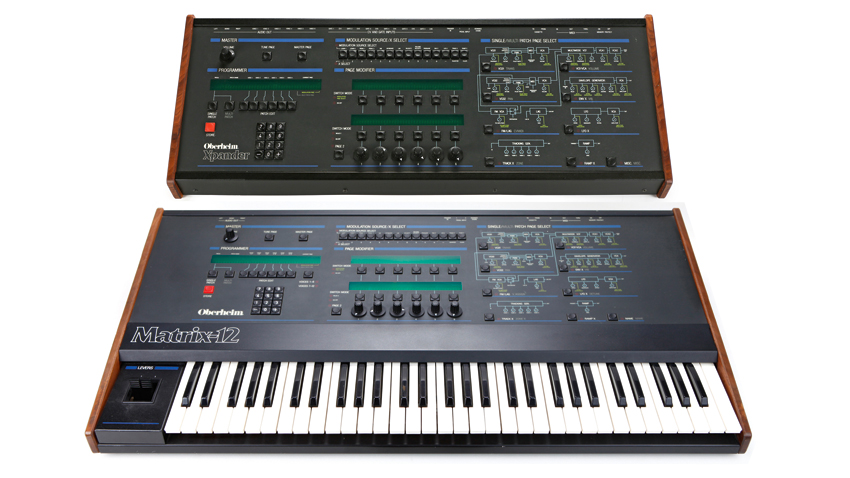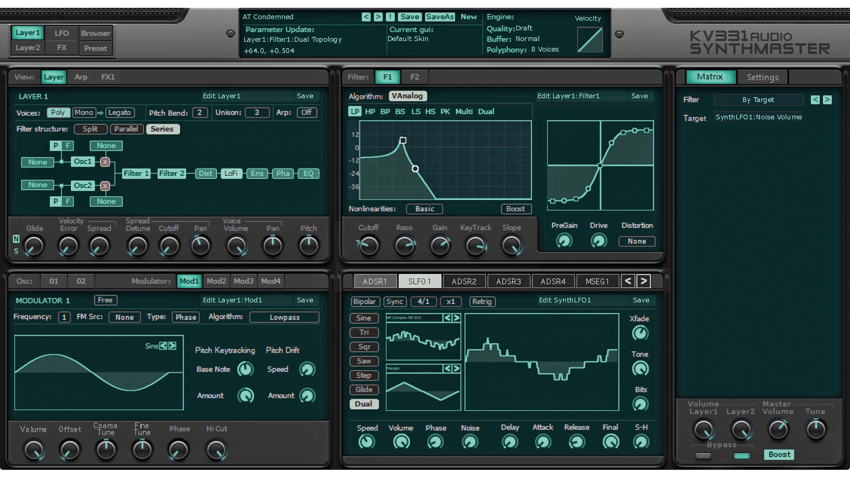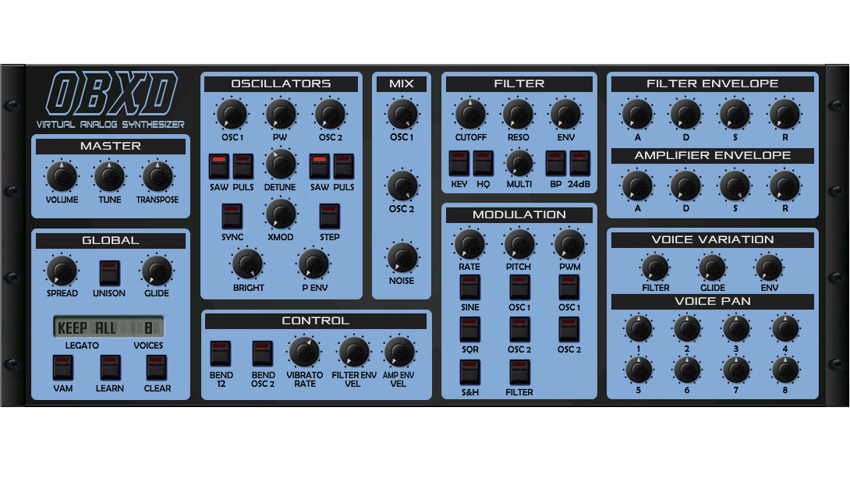Blast from the past: Oberheim Matrix-12 and Xpander
The last of the great analogue Oberheims was a big, beautiful beast that changed the way synthesizers were made forever

Thanks to blockbuster sales of the Yamaha DX7 and the costly computerised synthesis systems like those from Fairlight and PPG, by the time Oberheim’s most mature instrument was released, its sound was already seen as passé. Digital was all the rage, and synth manufacturers found any excuse to scribble the word across the front panel of their next big thing. Analogue synthesis was falling out of fashion in the mid 1980s, and though there were plenty of analogue synths on the shelves, many of them were cut-price knock-offs of the Prophet-5, Jupiter-8 or Oberheim’s OBXa.
Even as Yamaha contented themselves with milking every last drop of potential from their take on FM synthesis, the backroom boffins at companies like Casio, Kawai and Korg were beavering away on the digital creations that would help shape the sound of the decade. Oberheim, however, were having none of it. Rightfully realising that analogue synthesis could benefit greatly from advances in computer control, they set out to create the most sophisticated and evolved subtractive synth they could imagine. The result combined the expressiveness of the modern polysynth with the complex programmability of the massive modular synths of two decades earlier.
Unleashed in 1984, the Oberheim Xpander offered six voices, each with two oscillators, an unprecedented 15 analogue filter choices, five LFOs, and five DADSR envelope generators, four ramp generators, a lag function and three tracking generators.
More significant than the number of modulation options was the flexibility of Oberheim’s routing system. Essentially a digital version of the patch cables used on modular synths, the digital Matrix Modulation system allowed for vast modulation options.
This was a hybrid machine, with filters, oscillators and amplifiers all analogue, while envelopes, LFOs and other mod sources were digitally generated. It was a glorious melding of the two worlds.
The Oberheim Xpander was impressive and no mistake, but a year later it would be trumped by the massive Matrix-12, a keyboard version that doubled the polyphony and added a 61-note full-sized velocity-sensitive keyboard. Like the Xpander, it offered a breathtaking number of modulation sources and destinations – 27 and 47, respectively.
At £4595, the Matrix-12 was something of a hard sell in 1985. After all, skint musicians could avail themselves of a Korg DW-8000 for £1100. Yet there were plenty of moneyed musicians who knew a classic when they saw one, and big name users included Vangelis, Depeche Mode, Steve Roach, and later The Orb and Gravity Kills.
Get the MusicRadar Newsletter
Want all the hottest music and gear news, reviews, deals, features and more, direct to your inbox? Sign up here.
Those who couldn’t splurge would be treated to the stripped-down Matrix-6 the following year, not to mention the rack-mountable preset-based Matrix-1000 in 1987.
Three virtual Matrix-12s

Arturia Matrix-12V
As ever, you can count on Arturia to deliver the goods when it comes to emulations, and they don’t disappoint with the Matrix-12V. Here’s a one-to-one recreation that ups the ante by tossing a couple of effects insert slots into the signal path, adding studio-grade effects that make the deep, lush sound of the Matrix-12 even richer.
Read Arturia V Collection 5 review

KV331 Audio SynthMaster 2.8
Countless virtual analogue synthesisers ape the modulation matrix idea initially found in the Oberheims, and you’ve likely already explored a few of them. If not, you could do a lot worse than the popular SynthMaster from KV331 Audio, voted best VST/AU synth of 2016 by MusicRadar readers.

DiscDSP OB-Xd
While not an emulation of the Matrix-anything, OB-Xd is a free clone of the legendary Oberheim analogue polysynths that preceded the Xpander and Matrix-12 in the early 1980s. Featuring a dead ringer for the big, brash sound for which Oberheim is justly famous, OB-Xd isn’t as flexible as a Matrix, but it’ll give you a taste of the Oberheim sound for nuttin’.


Computer Music magazine is the world’s best selling publication dedicated solely to making great music with your Mac or PC computer. Each issue it brings its lucky readers the best in cutting-edge tutorials, need-to-know, expert software reviews and even all the tools you actually need to make great music today, courtesy of our legendary CM Plugin Suite.










